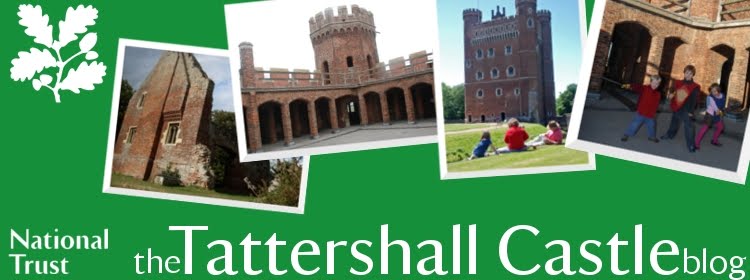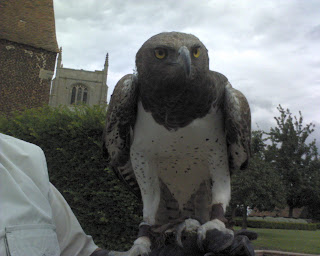
The current building was not the first castle to be built on the site; the very first was built in the eleventh century. The next one was built of stone in the early thirteenth century by Robert de Tateshale. In 1201 King John had granted Tateshale's father a charter to hold a weekly market in the village of Tattershall in exchange for a trained Goshawk. In 1231 Robert de Tateshale received a license to build a fortified stone house. Very little of the first castle can still be seen, but its layout of lengths of walls with round towers at each corner determined the shape of what does still survive.
Tattershall Castle had passed to Ralph, 3rd Baron Cromwell (1393-1456) by the early fifteenth century; Cromwell was a politician, landowner, diplomat and soldier. In 1433 he was appointed Lord Treasurer to Henry VI (the medieval equivalent of the Chancellor of the Exchequer, perhaps making the castle the medieval equivalent of Number 11 Downing Street?). With his new position came greater financial rewards and Cromwell invested his wealth to enlarge the castle. One of the masterpieces of medieval brickwork, the castle's
33.5 metre high great tower was built. In that period the tower would have been contending with the great cathedrals of the age. In the main rooms of the castle ,the impressive fireplaces proudly displayed the coats of arms of the affluent families the Cromwells had allied themselves to by marriage, and the Treasurer's Purse, Cromwell’s badge of office.
The great tower was a not too subtle expression of Cromwell’s power, but in addition to being a status symbol the castle was built to furnish Cromwell and his guests with comfortable and salubrious accommodation. This is evidenced in the sizeable and exquisite traceried windows (a delicate ornamental pattern from ornamental stonework), which would have likely provided insufficient resistance were they to come under siege.
The Castle was inherited by Joan Bourchier, Cromwell's niece, when he died in 1456; only to have it confiscated by the crown after her husband's death. Tattershall Castle went on to be owned by Kings of England from Edward IV to Henry VIII. During the sixteenth and seventeenth century it was occupied by the Earls of Lincoln, until 1693, when its defences were pulled down following the Civil War, leaving the property abandoned as a residence and left to decay into ruins (albeit picturesque). The grounds became part of a neighbouring farm and the moat was filled in. The tower itself was faced with the shame of being used to house cattle.
The great tower came under immense threat of demolition in 1910, when the castle was purchased by an American syndicate for architectural salvage, as part of the process the fireplaces were ripped out and sold. It wasn't rescued until 1911 when Lord Curzon, alerted by the outcry caused by the sale and removal of the fireplaces, bought the site and started the process of restoring the buildings, reinstating the fireplaces and excavating the moats. The windows and floors were replaced, the battlements were reconstructed; and Tattershall Castle was transformed back to its true glory. The survival of the castle and its stature today is testimony to Lord Curzon's campaign for the conservation of Britain's ancient monuments.
Lord Curzon opened the property to visitors in 1914 and bequeathed the property to the National Trust on his death in 1925. To this day the castle remains open to visitors who come and explore the six floors of the castle, enjoy the grounds, moats and bridges and climb the 150 steps from basements to battlements to enjoy the outstanding views of the surrounding Lincolnshire countryside.
(Ash)



 Sarah boldly dives into the Castle moat.
Sarah boldly dives into the Castle moat. 






